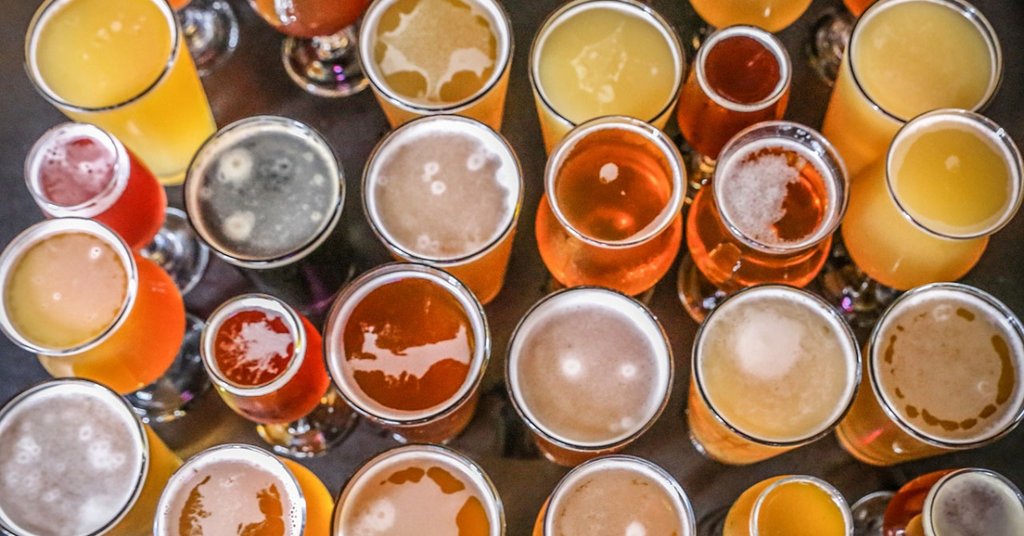
Today, we embark on a journey through time and taste as we tackle the ever-puzzling question: “How long can I keep craft beer?” Join us as we unravel the mysteries of freshness in the craft beer world, exploring the optimal shelf life, potential pitfalls, and tips to ensure that every sip is a celebration of flavors.
The Essence of Freshness
Hops and Glory
Hoppy Delights: Craft beer, especially hop-forward styles like IPAs, shines brightest when fresh. Hops are the prima donnas of the brewing world, and their flavors, aromas, and bitter notes are most pronounced in the early stages of a beer’s life. As time passes, the hop character diminishes, and the beer may lose its vibrant charm.
Malt Magic
Malty Marvels: While hoppy beers are revered for their freshness, malt-forward styles like stouts and porters often benefit from aging. The rich, complex flavors derived from malt can evolve and mellow over time, creating a velvety and well-balanced brew.
Understanding the Clock
No One-Size-Fits-All
Style Matters: The ideal shelf life varies depending on the beer style. Generally, hoppy beers, wheat beers, and lighter ales are best enjoyed fresh within a few months, while high-alcohol and barrel-aged brews may improve with age and have a longer potential lifespan.
Storage is Key
Cool, Dark, and Stable: Craft beer is a delicate creation, susceptible to the harsh realities of light, heat, and fluctuations in temperature. To maximize freshness, store your beer in a cool, dark place, away from direct sunlight and temperature extremes.
The Freshness Countdown
Hoppy Beers
IPAs, Pale Ales, and Pilsners: Aim to consume within 3-6 months. While these styles are at their hoppy best in the early stages, they can still be enjoyed beyond this timeframe. However, be mindful of diminishing hop character.
Malty Beers
Stouts, Porters, and Barleywines: These robust styles often benefit from aging and can be enjoyed for several months to years. Some enthusiasts even cellar certain high-alcohol and barrel-aged brews for extended periods to enhance complexity.
The Perils of Procrastination
Hop Fade and Stale Flavors
Bitter Reality: Hop-forward beers are especially susceptible to hop fade, resulting in a loss of the vibrant hop flavors and aromas that make them delightful. Stale and cardboard-like flavors may emerge as the beer ages.
Skunky Business
Light Strikes: Exposure to light, particularly UV rays, can lead to the development of “skunky” flavors, reminiscent of that unfortunate aroma you get when a beer has been exposed to sunlight for too long.
Tips for Freshness Success
Check the Date
Bottled on or Best By: Many craft breweries include a bottling date or a best-by date on their packaging. Use this as a guideline to gauge freshness.
Store Smart
Cool and Dark: Invest in proper beer storage, keeping your beloved brews away from light and temperature fluctuations. A beer fridge or a dedicated cool space can make all the difference.
Rotation Ritual
First In, First Out: Implement a rotation system for your beer stash. Consume the oldest beers first to ensure you enjoy them at their peak freshness.
So, how long can you keep craft beer?
The answer lies in the delicate dance between time, style, and proper storage. While hoppy beers demand a swift embrace, malt-forward styles may reward patient enthusiasts with evolving complexities. As guardians of the craft beer realm, let us cherish the fleeting freshness of each sip and revel in the ever-evolving flavors that make each brew a unique experience. May your beer be fresh, your glass full, and your palate forever delighted! Cheers to the endless pursuit of freshness in the world of craft beer!
